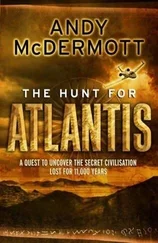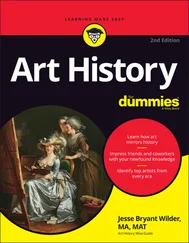1 ...7 8 9 11 12 13 ...30
Life in Aboriginal Australia
Find a carpenter’s tape measure. Pretend each centimetre equals ten years. Unreel the tape measure and look at the very first 22 centimetres — that’s the entire history of European settlement in Australia. Now (in a good long room and if your tape is long enough) unreel the tape measure to 50 metres — that’s a conservative estimate of the length of Aboriginal history (or 5,000 years). Some scientists argue that, based on archaeological evidence, Aboriginal people arrived in Australia at least 65,000 years ago.
 The Europeans who first encountered the Australian Aboriginals observed that they had no agriculture, no domestic livestock and didn’t appear to wash. To the European way of thinking, this made them a primitive people, unchanged since the Stone Age. Those same Europeans might have asked themselves, when the wind killed their crops and their wells ran dry, how these ‘primitive’ people had managed to survive for so long in such a harsh landscape — without the aid of tinned food and sacks of British grain.
The Europeans who first encountered the Australian Aboriginals observed that they had no agriculture, no domestic livestock and didn’t appear to wash. To the European way of thinking, this made them a primitive people, unchanged since the Stone Age. Those same Europeans might have asked themselves, when the wind killed their crops and their wells ran dry, how these ‘primitive’ people had managed to survive for so long in such a harsh landscape — without the aid of tinned food and sacks of British grain.
Evidence exists of trade and cultural exchange between Aboriginal peoples and South-East Asians dating back thousands of years, so it can hardly be likely that Aboriginals were unaware of agriculture. They simply had little use for it in the dry, unfertile soils of their home. Agriculture was unsuited to Australia’s grasslands and deserts (some argue agriculture still is, despite all the water and modern fertilisers we can throw at it), so Aboriginal communities predominately survived by hunting and gathering, managing resources extremely prudently — and maintaining their population at a sustainable level. While they did grow crops of tubers such as yams, grain such as native millet, macadamia nuts, fruits and berries, their farming has been described as an activity rather than a lifestyle.
 Although Aboriginal Australians didn’t undertake large-scale agriculture, they did develop techniques that helped control their environment. One of these techniques is now known as firestick farming . Aboriginal people used fire in a deliberate and systematic way to clear undergrowth and encourage regrowth to attract fauna, as well as to flush out game. (For more on their lifeways, and how this affected the modern Australian landscape, see the sidebar ‘Shaping Australia with nomadic lifeways’.)
Although Aboriginal Australians didn’t undertake large-scale agriculture, they did develop techniques that helped control their environment. One of these techniques is now known as firestick farming . Aboriginal people used fire in a deliberate and systematic way to clear undergrowth and encourage regrowth to attract fauna, as well as to flush out game. (For more on their lifeways, and how this affected the modern Australian landscape, see the sidebar ‘Shaping Australia with nomadic lifeways’.)
The Aboriginals were careful not to damage the fragile web of ecological relationships that sustains life on this dry island, because they depended on the web for survival. (And, incidentally, they didn’t wash much because they were well aware that water was too valuable to waste — something all Australians have been learning recently.) When the Europeans landed, Aboriginal peoples actually had a better life expectancy than the colonists, as well as almost no instances of the ‘modern’ diseases — tooth decay, heart disease, tuberculosis and cancer. The effectiveness of their resource management (such as the controlled burns to increase hunting pasture) gave them far more leisure time than the arriving agriculturalists, which equalled time to play, talk and dream. That’s right — the original affluent society.
This isn’t to make the mistake of romanticising the tougher elements of Aboriginal life. Records suggest that even infanticide (killing newborn babies) was carried out in some cultural or tribal groups to ensure sustainable population levels. Deaths from tribal warfare and feuds were relatively commonplace. Life was no picnic. Aboriginals needed to make hard choices and ruthless decisions simply to survive, as well as develop infinite resourcefulness and adaptability. But no-one can deny that, survival-wise, the Aboriginal way of life was a tremendous success. Aboriginals have managed to maintain a continuous culture through millennia, which is something no other people — anywhere — has achieved.
 SHAPING AUSTRALIA WITH NOMADIC LIFEWAYS
SHAPING AUSTRALIA WITH NOMADIC LIFEWAYS
Indigenous Australians didn’t engage in intensive, settled agriculture. Their lifeways were nomadic rather than sedentary — which is another way of saying they didn’t structure their whole way of life around living in settled villages, nearby fenced-in paddocks and fields. Instead, they moved about relatively frequently, even as they harvested native grasses, constructed elaborate dams and, in some places, stone houses.
As they moved about their country they also practised firestick farming, using fire to manage different environments. This helped create and sustain the enormous grasslands across the plains of south-eastern Australia — and so helped shape and curate the landscape we recognise today as Australian.
In two very direct ways, the lifeways of Aboriginal peoples created the conditions that subsequent Australian society would build with:
The British–European settler society that established itself after 1788 did so in a physical environment that had been crafted, curated and maintained by Indigenous Australians over many millennia. Those who came after benefitted from the tens of thousands years of sustained occupation by this original nomadic society — and they especially benefitted from the fertile grasslands just perfect for sheep and cattle (see Chapter 7).
When the British first came to Australia, they found a low-population density compared to sedentary agricultural societies in other nearby places. In Polynesia and Maori New Zealand, for instance, fortified villages and more intensive cultivation occurred, which meant that when Europeans arrived any violent resistance could draw on more numbers. Australian nomadic society flourished as a small-scale proliferation of small bands, which left them vulnerable to the really huge numbers and resources settler societies could call upon when they arrived in the 18th and 19th centuries.
Violent resistance to European invasion in Australia still occurred, of course. Everywhere the frontier extended, violent conflict took place. But in terms of sheer numbers and scale of response, the dice were stacked against the original possessors of the continent.
Above all, the prehistoric Aboriginals were masters of language. Historians estimate that up to 750 distinct languages existed on the Australian continent when the European settlers arrived (refer to Figure 2-1), which implies that the average person would probably have had to be fluent in quite a few different languages just to get along with his or her neighbours.
 In Aboriginal society, age meant authority — in large part because of the copious survival knowledge acquired with the years. A culture with no written records had to preserve and pass on all ideas, arguments, technology and traditions from one generation to the next through the spoken word. It’s therefore no surprise that Aboriginal society was heavy on song, gesture, story and elaborate ceremony. Learning responsibility and the rules that govern stable society went hand in hand with acquiring the skills of food gathering and resource management.
In Aboriginal society, age meant authority — in large part because of the copious survival knowledge acquired with the years. A culture with no written records had to preserve and pass on all ideas, arguments, technology and traditions from one generation to the next through the spoken word. It’s therefore no surprise that Aboriginal society was heavy on song, gesture, story and elaborate ceremony. Learning responsibility and the rules that govern stable society went hand in hand with acquiring the skills of food gathering and resource management.
Trading with the neighbours
Pre-European Australia was a very social place — it took teamwork to survive in such a challenging land! Tribes had complex kinship and trading connections over vast distances, and even overseas. (Many are surprised to learn that the Aboriginals were not ‘pre-contact’ at all when the First Fleet arrived — they’d been trading, intermarrying and presumably speaking with the Macassans of Indonesia for decades, and quite possibly centuries). As in much of the world at the time, the barter economy was a part of life.
Читать дальше

 The Europeans who first encountered the Australian Aboriginals observed that they had no agriculture, no domestic livestock and didn’t appear to wash. To the European way of thinking, this made them a primitive people, unchanged since the Stone Age. Those same Europeans might have asked themselves, when the wind killed their crops and their wells ran dry, how these ‘primitive’ people had managed to survive for so long in such a harsh landscape — without the aid of tinned food and sacks of British grain.
The Europeans who first encountered the Australian Aboriginals observed that they had no agriculture, no domestic livestock and didn’t appear to wash. To the European way of thinking, this made them a primitive people, unchanged since the Stone Age. Those same Europeans might have asked themselves, when the wind killed their crops and their wells ran dry, how these ‘primitive’ people had managed to survive for so long in such a harsh landscape — without the aid of tinned food and sacks of British grain. SHAPING AUSTRALIA WITH NOMADIC LIFEWAYS
SHAPING AUSTRALIA WITH NOMADIC LIFEWAYS










